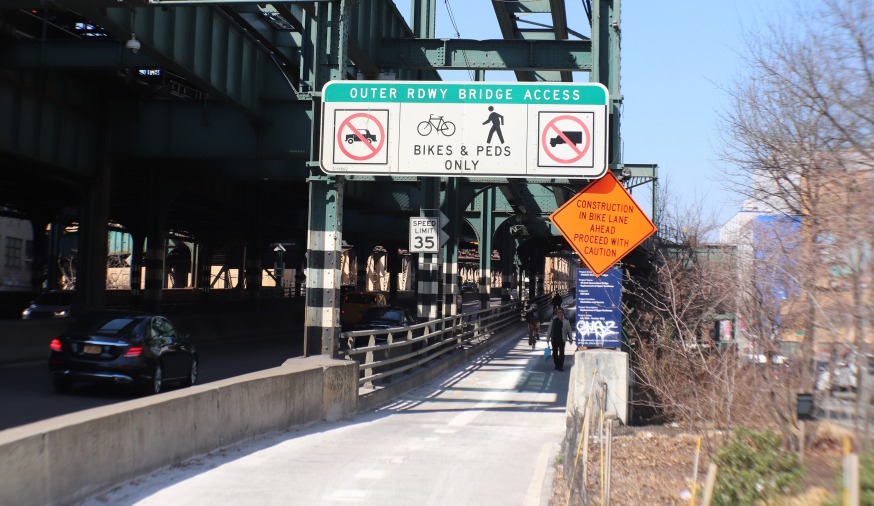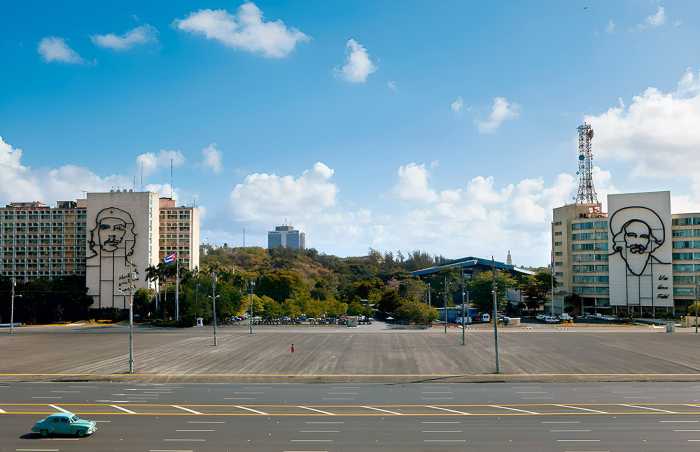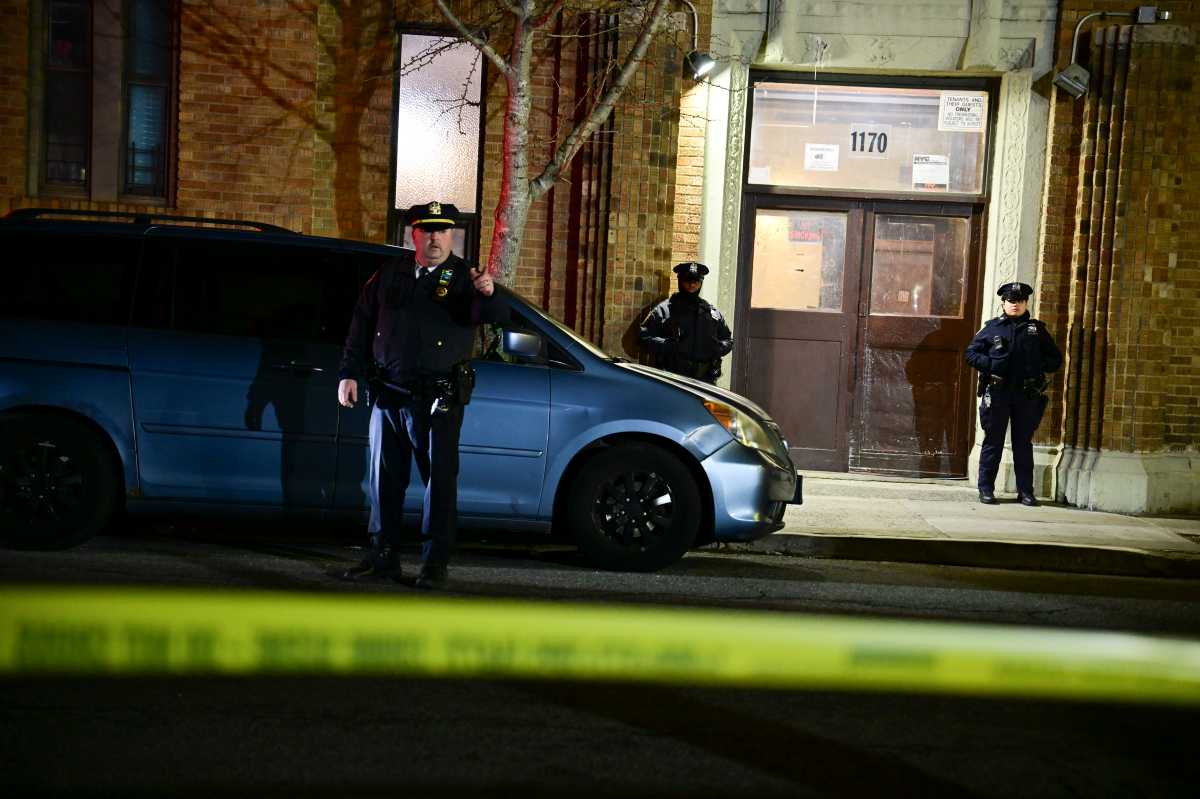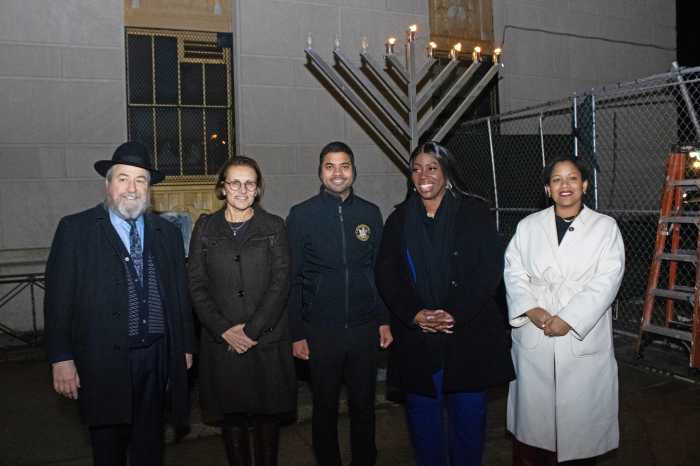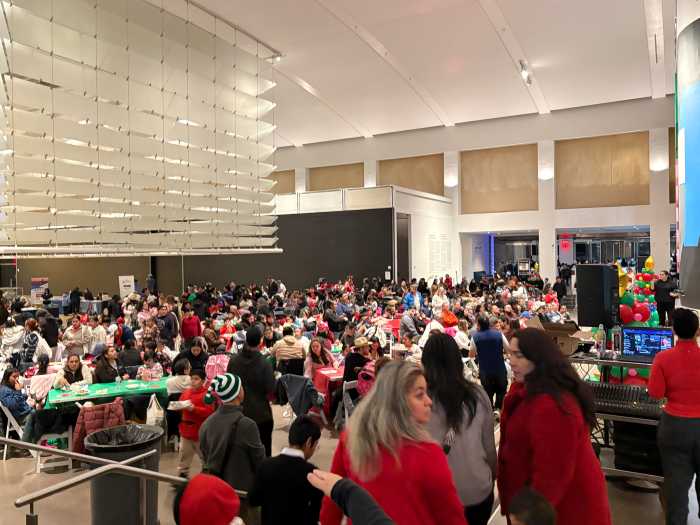City officials told amNewYork on Tuesday that cyclists and pedestrians will finally have their own lanes on the Ed Koch-Queensboro Bridge, ending a years-long controversy that had the two groups sharing a narrow path on the vehicle-heavy span.
Starting May 18, the north outer roadway of the Queensboro Bridge will be used exclusively for cyclists, and the south outer roadway, which is currently a vehicle lane, will become a dedicated space for pedestrians.
The Queensboro Bridge, which connects Queens to Midtown, is the only city-owned bridge above the East River without separate paths for pedestrians and cyclists. Currently, the north outer roadway of the bridge is a shared space that crushes both pedestrians and cyclists together in a tight, 11-foot lane.
Long fight for Queensboro Bridge path
Advocates have fought to open a separate pedestrian path, citing dangerous overcrowding that has led to conflicts among cyclists, pedestrians and micromobility users. Manhattan Community Board 6 even passed a resolution in October calling on the NYC Department of Transportation (DOT) to open the path without delay and “without regard to delays of construction,” which was being done on the bridge’s upper level last year.
However, once the south outer roadway opens for foot traffic, the bridge’s pedestrian and cycling space will double while eliminating space for vehicles.

The new pathway was supposed to open sooner but Mayor Eric Adams, at first, delayed the celebration to ensure he and his team were fully briefed, and the new layout did not negatively impact traffic, a City Hall spokesperson explained.
The double-decker Queensboro Bridge was built in 1909. Adams cited the span’s history by saying it has connected New Yorkers between Manhattan and Queens for 100 years while offering “breathtaking views” of the cityscape.
“Now, our administration will make it even easier and safer to do so,” Mayor Adams said. “The more we make it safe to walk and bike, the more people utilize their bikes, and thanks to new cycling infrastructure in communities near the bridge, more and more pedestrians and cyclists are utilizing the Queensboro Bridge. Today’s announcement doubling the space available for pedestrians and cyclists builds off those upgrades and is a win-win for everyday New Yorkers.”
The opening of the south outer roadway comes after the DOT’s most recent bike count, conducted from April 1 to Oct. 31 last year, showed that bike traffic over the East Side bridges reached an all-time high four years in a row.
DOT Commissioner Ydanis Rodriguez said the city reached a record-high bicycle ridership because officials provided “safe, meaningful connections” to cyclists across the city.
“By reclaiming the south outer roadway for pedestrians, we’re helping create comfortable connections for the growing number of pedestrians and cyclists on the bridge, as well as helping all New Yorkers get around more easily without a car,” he said. “We look forward to delivering continued upgrades to each side of the bridge to improve cycling and pedestrian connections this summer.”
The Queensboro Bridge is the third city bridge over the East and Harlem Rivers to receive expanded pedestrian and bike infrastructure in recent years, with expanded space also added to both the Brooklyn Bridge in 2021 and the Washington Bridge in 2024.
‘Magical’ moment for bicyclists and pedestrians
Meanwhile, transit advocacy and green space groups celebrated the long-overdue news.
“It’s exciting to see DOT reallocating space to make our streets work best for everyone. The Queensboro Bridge has been almost infamous for its lack of adequate space for pedestrians and active transit, Sara Lind, co-executive director of Open Plans, said. New Yorkers have asked for this and DOT is delivering.”
She also said that more space means more possibilities for people to explore the city on bike or foot.
“This will prevent injuries but since we know that lack of safe space actually stops many New Yorkers from biking, it will also encourage more biking and walking across the bridge,” Lind explained. “That’s a great thing for our city, and ideally, DOT will quickly prioritize similar bridge projects to improve how New Yorkers can safely get around the city.”
Transportation Alternatives led a rally in April to advocate for the pedestrian path’s opening. Ben Furnas, the organization’s executive director, was “thrilled” to hear the walkway would soon open.
“Just a month after our People’s Ribbon Cutting on the Queensboro, New Yorkers will finally have more space to get over the bridge by foot or by bike,” Furnas said. “We’ve been calling for this for years, and we’re thrilled that Mayor Adams has scheduled an opening date for the pedestrian path this Sunday. There are few things as magical as walking or biking over a bridge in New York City, and we can’t wait to do it safely on the Queensboro.”
Danny Pearlstein, policy and communications director of the transit advocacy group Riders Alliance, applauded the opening of the south outer roadway, but said more needs to be done to design a busway in the Bronx.
“It’s great to see the mayor finally coming around after so much effort was invested in this critical project,” he said. “As bus riders, we’d love to see the same thing on Fordham Road, where planners spent years designing a busway that got scrapped because wealthy suburban opponents had the mayor’s ear.”






